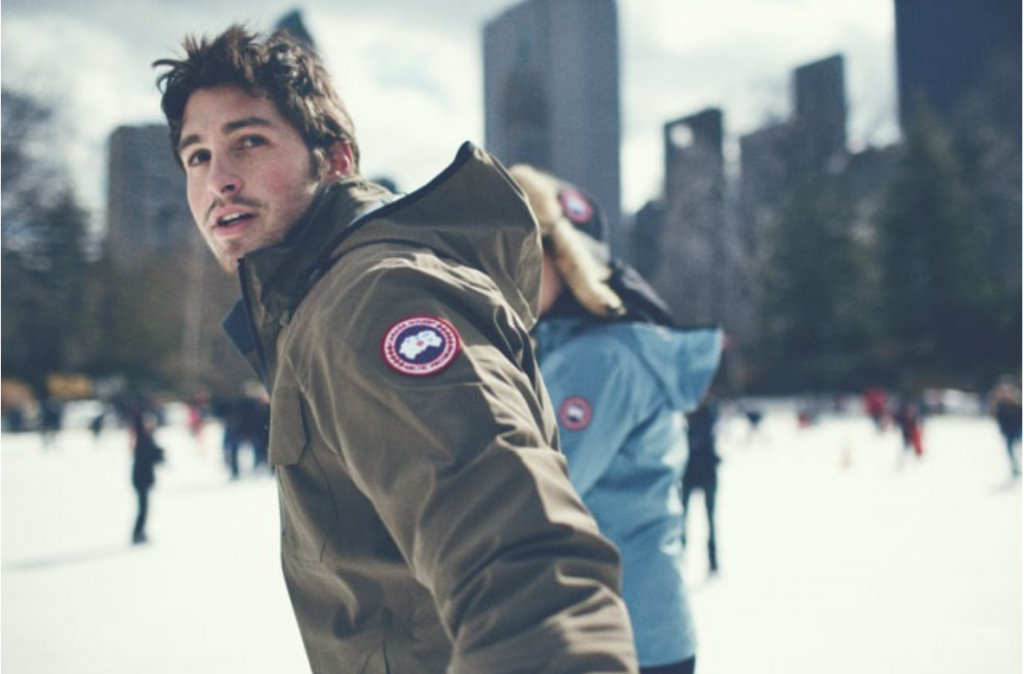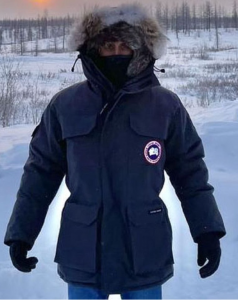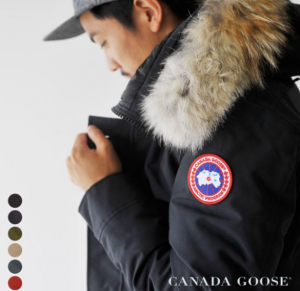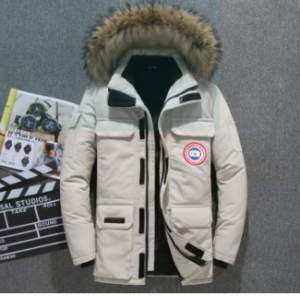Canada Goose’s sustainability strategy takes flight
Premium outerwear brand Canada Goose has been actioning a number of sustainability initiatives. Drapers gets the lowdown from Gavin Thompson, VP of corporate citizenship at the brand.

Canada Goose is increasing its sustainability credentials. Last year, the business phased out the use of fur and stopped manufacturing products which use fur.
It aims for 90% of its products to be made from recycled, organic, natural, biodegradable or plant-based materials by 2025. Canada Goose is also reducing its use of chemicals within its products – it is phasing out the use of perfluoroalkyl and polyfluoroalkyl substances [PFAS – a group of chemicals used to make fluoropolymer coatings and products that resist heat, oil, stains, grease, and water]. Canada Goose successfully ceased using PFAS in its Arctic Tech fabric in June 2022, using recycled polyester and organic cotton instead.
This year, the brand entered the rental market. In January, Canada Goose partnered with Selfridges to rent its coats and jackets to consumers. Products are now available to rent for 4, 8, 10 and 20 day periods, with prices starting from £55 for four days. Canada Goose coats retail at over £1,000.
Drapers speaks to Gavin Thompson, VP of corporate citizenship at Canada Goose.
What are the key updates from the progress on your sustainability strategy?
We have been more and more transparent on all aspects of our business [since the introduction of the strategy in 2019] including how and where we source our materials, how we manufacture our products and our product lifetime warranty.

We began outlining our Sustainable Impact Strategy in 2018, being very intentional on building on the things we had already been doing, but also looking at the future of our industry as it pertains to our impact on the planet, and identified fundamental goals to ensure a future for the planet and everyone on it.
First, we’ll start with our operations. We are committed to achieving net zero scope 1 and 2 emissions by 2025 or sooner through a three-pronged strategy: improve building efficiency, reduce carbon sources and embrace renewable energy. Until reaching net zero, we have an annual goal to achieve carbon neutrality for company operations. We first achieved this in 2019 and have continued to every year since. We doubled down on our carbon neutrality by investing our annual carbon offset to 200% of the total output.
Next is the commitments regarding our materials. We are certified under the Responsible Down Standard (RDS) as a brand and manufacturer in 2021, and as of the end of 2022, we are fur free.
We are transitioning 90% of our materials to preferred fibres and materials (PFMs) by 2025. PFMs are sustainable alternatives to conventional materials, including those that are recycled, organic, natural, biodegradable or plant-based. As of our 2022 ESG Report, we have transitioned over 50% of our materials to PFMs. Kind Fleece is an example of this commitment, as it’s made of recycled wool and bio-based fibres [Kind Fleece is made using 2% recycled wool, 18% wood-based Tencel Lyocell, a biodegradable fibre made from wood, and 13% bio-based Sorona Polymer—a plant-based polymer made from the sugar derived from corn].
We are dedicated to keeping chemicals out of our products. One example of this is that we are discontinuing the use of perfluoroalkyl and polyfluoroalkyl substances [PFAS – a group of chemicals used to make fluoropolymer coatings and products that resist heat, oil, stains, grease, and water] in our Arctic Tech fabric, redeveloping this proprietary fabric by the end of 2023. We started with phasing PFAS out of our Arctic Tech fabric and are proud to announce we achieved that goal in June 2022. We redeveloped Arctic Tech to now be made of recycled polyester and organic cotton and are working diligently to remove PFAS from all fabrics and materials.
Another example is our Bluesign commitment [an organisation that works to reduce the environmental impact of the textile supply chain]. Our goal is by 2025, for 90% of our materials will be Bluesign approved for responsible and sustainable practices. Per our 2022 ESG Report, we are at 65%.
We are also on track to transition 100% of our packaging to more sustainable solutions by the end of 2025. We’ve transitioned 75% to include recycled content and other environmentally responsible materials.

What are the biggest challenges to reaching your sustainability goals and how are you tackling them?
We’ve never been the company that takes the easy route and I think that’s a key factor to our success.
One challenge is that we continue to expand globally and with that, comes an expanded footprint. We’ve learned to balance efficiency and growth and accelerate our progress to stay on track towards our goals. We are ensuring that we grow responsibly and stick to a set of guidelines across all our departments to make sure everything we do is led with sustainability, wherever possible.
Like everyone, we did face challenges with a few of our goals given global Covid shutdowns. For example, the elimination of single use plastics – we came out strong when we first announced, but the progress was delayed due to the timing of third-party waste audits. However, we have turned a corner and our confidence in achieving our commitments has not wavered.
On a practical level, the pandemic gave us opportunities to explore more sustainable approaches to our usual practices. We produced more digital marketing campaigns with CGI-based content and working remotely created a lot of opportunities to be more sustainable across many departments. Our product and design team leveraged more digital tools, as well as minimised samples and transitioned to 3D prototyping. As well, we – like many other companies – utilised technology to connect rather than travelling to and from meetings. These practices have carried us into the post-Covid world.
When it comes to materials, some of our sustainable products have gone through many iterations to ensure we’re bringing a sustainable product to market that we are confident holds up to our high-quality standards, performs and is authentically ‘us.’ The initial trial for Kind Fleece was made with spandex for stretch and recovery but after gear testing, we determined the fabric was unstable – and instead, chose Sorona [a partially plant-based polymer] for stability. It was also important that we made our Kind Fleece in Canada, so research and development extended to building up the skill set of our teams here. Ultimately, Kind Fleece utilizes 20% less water and emits 18% less greenhouse gas (GHG) emissions in comparison to synthetic fleece.
What has been the impact on sales of phasing out fur?
We have continued to expand our business – both in revenue, and with new and existing categories. This is the case today, just as much as it was years before we announced our decision to go fur free.
Well ahead of this decision, we had been expanding our product offerings with the introduction of lightweight down in 2011, knitwear in 2017, fleece in 2020, and footwear in 2021. We already offered a variety of non-fur parkas and our core styles that traditionally had fur, also came in a non-fur option. Our new and existing categories continue to perform incredibly well – we announced our decision to go fur free in June 2021 and at the end of that fiscal year (March 2022), reached a milestone for our business of $1bn (£800m) in revenue.




